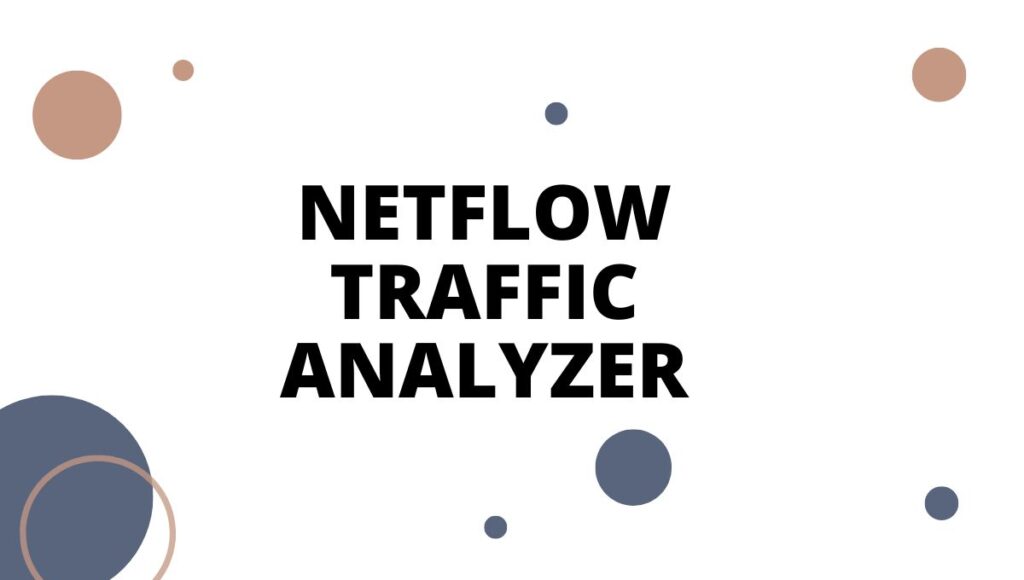NetFlow is a protocol for collecting IP network traffic information. It’s used by routers and switches to monitor traffic flows and identify which applications and users are consuming the most bandwidth. While it may not sound like the most exciting data to collect, NetFlow data can be a goldmine for network administrators. By analyzing NetFlow traffic, you can troubleshoot network issues, optimize performance, and even detect security threats. Now learn how to get the most out of your NetFlow data with the ultimate NetFlow traffic analyzer. We’ll cover everything from setting up your environment to configuring your monitoring system and beyond.
What is NetFlow Traffic Analyzer?
NetFlow Traffic Analyzer is a flow-based traffic analysis tool that enables you to monitor, analyze, and troubleshoot your network traffic. It uses a proprietary flow-based protocol to collect information about network traffic flows passing through a router or switch. This data can be used to identify trends, visualize traffic patterns, and diagnose problems.
NetFlow Traffic Analyzer is an essential tool for any network administrator who wants to optimize their network performance. Understanding how traffic flows through your network enables you to make informed decisions about capacity planning, routing, and other optimizations. NetFlow Traffic Analyzer can also help you troubleshoot problems by providing visibility into what is happening on your network.

Autonomous networking
You understand the worth of data collection and analysis if you manage network traffic. After all, how can you make informed decisions about your network without knowing what traffic is flowing through it? This is where NetFlow comes in. NetFlow is a protocol that allows you to collect data about network traffic flows. This data can be used to troubleshoot connectivity issues, monitor for unusual or suspicious activity, and track down the source of Denial of Service attacks.
Yet what if there was a way to automate the collection and analysis of this data? That’s where autonomous networking comes in. Autonomous networking is a term that refers to the use of artificial intelligence (AI) and machine learning to manage network traffic. This means that instead of relying on manual input from network administrators, autonomous networking systems can automatically detect and respond to changes in network traffic patterns.
This can have a number of benefits for organizations that implement it. For one, it can help to improve the efficiency of your network by reducing the need for manual intervention. Additionally, it can help to enhance security by providing better visibility into what is happening on your network in real time. And finally, it can help to free up staff time so that they can focus on other tasks.
If you’re interested in implementing autonomous networking in your organization, there are some factors you need to keep in mind. First, you’ll need to ensure that your NetFlow data is being collected wholly and accurately. Second,
End-to-end network visibility
End-to-end network visibility is critical for any organization that wants to ensure optimal network performance and security. The Ultimate NetFlow Traffic Analyzer is the perfect tool for gaining end-to-end network visibility, as it provides detailed information on all NetFlow traffic flowing through your network. NetFlow traffic analysis offers a comprehensive view of all network activity, allowing you to identify and troubleshoot problems quickly.
With the Ultimate NetFlow Traffic Analyzer, you can:
1. Identify which devices are generating the most traffic
2. Understand which applications are using the most bandwidth
3. See which users are consuming the most resources
4. Quickly troubleshoot network issues
The Ultimate NetFlow Traffic Analyzer is a powerful tool that provides you with all the information you need to optimize your network performance and security.
Analyze NetFlow Data
NetFlow is a traffic analysis tool that can be used to monitor and troubleshoot your network. It can be used to see which devices are talking to each other, how much data is being transferred, and where bottlenecks are occurring.
Once you have it up and running, you can start analyzing your NetFlow data. The dashboard provides an overview of all the traffic flowing through your network, as well as some basic statistics.
You can drill down into specific time periods to see more detailed information about the traffic during that time. And you can generate reports to share with others or to keep for future reference.
Thanks for reading, and we hope this article has been helpful! NetFlow is a powerful traffic analysis tool that can help you identify issues with your network and make informed decisions about how to fix them. By understanding what NetFlow is and how it works, you can use it to troubleshoot problems, improve performance, and keep your network running smoothly.